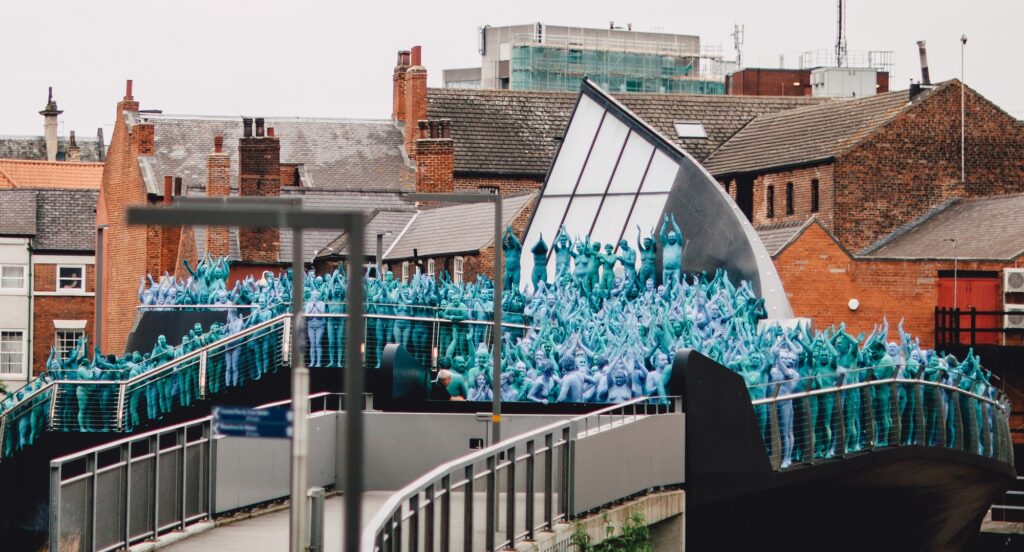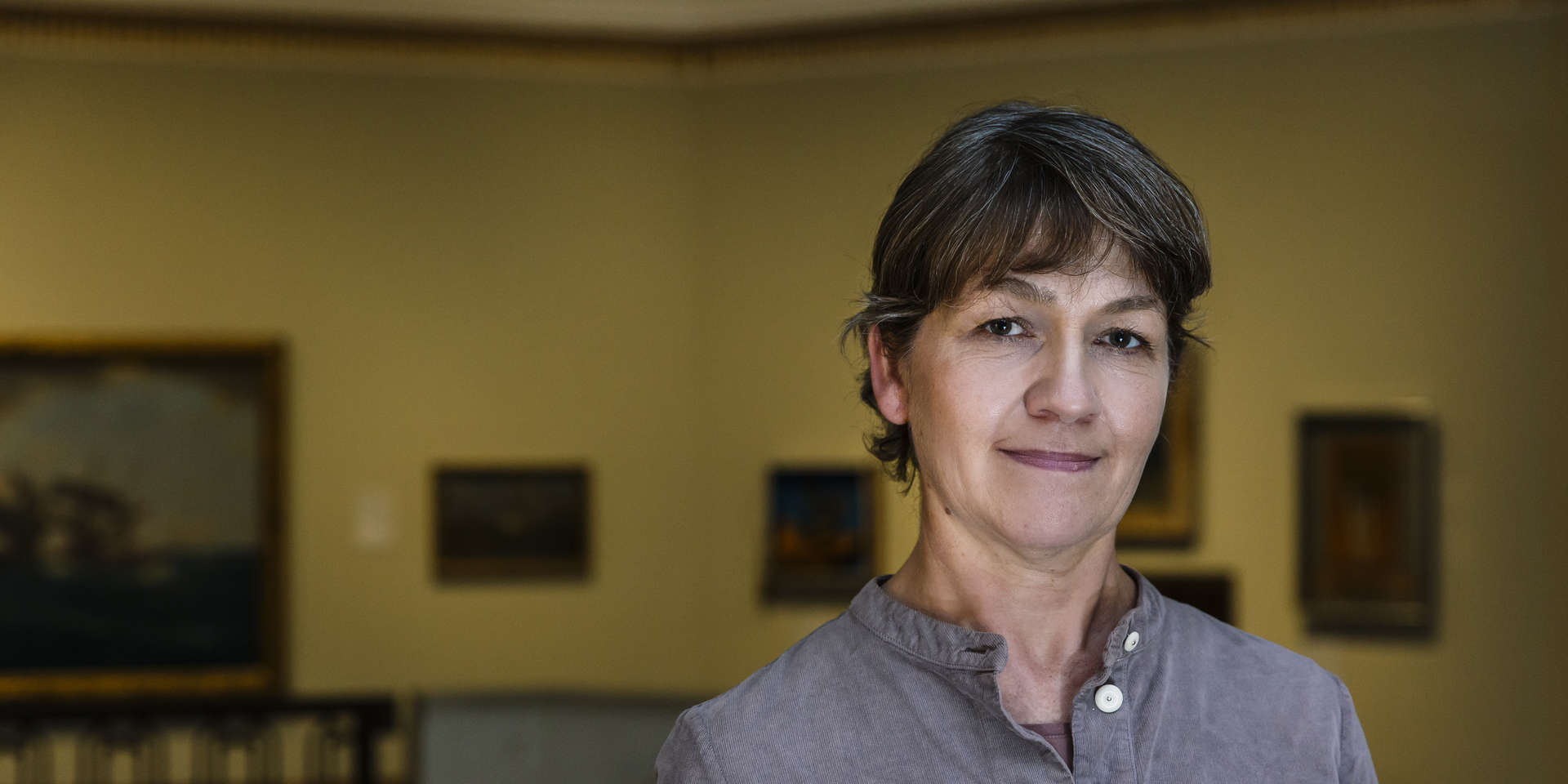When Kirsten Simister arrived in Hull in 2003 to take up the role of curator at Ferens Art Gallery, she couldn’t have imagined what was in store for both her and her new adopted city.
Hull’s rich cultural and artistic landscape has flourished since then, with Ferens Art Gallery itself benefitting from a £5.2m refurbishment prior to Hull holding the title of UK City of Culture in 2017, and in 2018 the gallery – a gift to the city from philanthropist Thomas Ferens – was shortlisted for the prestigious Art Fund Museum of the Year award.
We sat down with Kirsten, who is leaving her post at the end of the year to return to her native Scotland, to chat about an incredible 17 years.
“One weekend just before I started work I walked into a furniture shop on Spring Bank. The owner chatted away but when he heard why I was in Hull he went on to sing the praises of the Ferens and to say how much he loved it.
“His obvious pride and affection made me realise the scale of the responsibility I’d taken on and I had a real desire not to let people down.”

Kirsten’s highlights of her first few years at the gallery included the “honour” of working with artists and art historians who she greatly admired, which included Christopher Wright, an expert in Netherlandish art, which features prominently at the Ferens.
It was an adrenaline-fuelled trip to Rome though, as a courier for a Ferens masterpiece by Italian painter Canaletto, which stands out most in her memory from her early days.
“Our small group of UK curators were met at the airport by an Italian police escort and driven at high speed into the city centre behind a white van containing the artworks. We followed in a second car behind the van, while a lead police car held a marksman, equipped in cool shades, with his gun trained out of the back-window towards us, looking for any signs of ambush.
“Our speeding convoy jumped the traffic lights at every junction. Any oncoming traffic was flagged down by officers leaning out of the back windows of the lead car while frantically waving small, round batons, like table tennis bats, and shouting in Italian. It was a dangerous, stomach-churning but thrilling trip. After the white-knuckle ride, the install of the painting next morning was something of an anti-climax.”
In almost two decades as curator at the gallery, Ferens has hosted exhibitions for artists from all over the world, but it was an exhibition from an artist from much closer to home that stands out for her the most.
In 2011, Ferens displayed David Hockney’s huge 52-part local landscape painting, Bigger Trees near Warter.
“Hockney drove us to his mother’s house in Bridlington where he then lived, and showed us wide-screen films he’d been making from a barrage of cameras attached to the top of his Land Rover. The spring in nearby country lanes continues as the inspiration for many of his works and iPad drawings.
“As a workaholic, up with the lark but often tired by the afternoons, we never took it for granted that he would manage the Ferens preview but we’d prepared very carefully, accommodating his preferences for chain-smoking Camel cigarettes and drinking of non-alcoholic lager.
“During our staff briefing my mobile rang and it was his right-hand man, Jean-Pierre, to tell us they’d arrived at the loading bay. I had to excuse myself to run off and unlock the back gates.
“Hockney was disarming in his usual flat cap, quite quiet but smiled at his work and stayed for most of the night.
“Many staff and visitors were able to chat with him and get his autograph outside, overlooking Princes Dock. His exhibition was a huge hit and catalyst, beginning a step-change for us, growing Ferens audiences and profile locally and beyond, and paving the way for other national partnerships.”

The profile of Ferens was propelled even further in 2017 when Hull held the crown of UK City of Culture. The phenomenal programme of events and exhibitions of course included Ferens Art Gallery, which was beaming as a result of a £5.2m refurbishment.
The gallery hosted works by Rembrandt, Bacon, Manet, Duccio, Cimabue, Freud and Mueck, as well as hosting the internationally-recognised art prize The Turner Prize and the unforgettable Sea of Hull photographs from American artist Spencer Tunick.
Tunick’s Sea of Hull was very much made in Hull, with more than 3,000 local people stripping off and painting themselves blue on a cold July morning so that they could be photographed, en masse, at locations throughout the city.
“I was anxious when I dropped my husband off. He’d been one of the first to sign-up but it felt strange leaving him alone at the park in the dark, vulnerable, carrying his plastic carrier bag for his clothes.
“It was a huge privilege to watch the event unfold. The first shot was taken from a private apartment to which we’d pre-arranged special access. I was standing behind the artist’s shoulder on a tiny balcony on the top floor of the BBC building overlooking the Rose Bowl as dawn broke. We looked out with breath held on that very still, very peaceful morning.
“The odd seagull was the only sign of life over a panorama of rooftops stretching back towards Hull Marina and the distant Humber Estuary. Then the first, tiny blue figures filed out from the trees bordering Queen’s Gardens. More and more streams flowed, joining into rivers of dignified, harmonious, vibrant blue.
“Tunick’s resulting vision – a sea of humanity – sent shockwaves of awe right up the back of my neck. It was simply amazing.”
One thing that hasn’t changed in 17 years is how much the city treasures the art gallery.
“The role played by the Friends of the Ferens organisation continues to be hugely important. Their hard-working trustees and members continue to advocate for and support vital collections’ work.
“One of the most spectacular and ambitious examples is the large canvas by Guardi that hangs in Gallery 3, that was Friends’ funded in 2010.
“They’ve also played a very active role in encouraging Ferens work with younger people, most recently through funding a series of Lates – evening events sadly cut short by Covid but to be continued in the future.”

And it’s this commitment to younger audiences and creatives that Kirsten wants to see continue.
“It’s vital that younger people in particular can feel connected to their local gallery and the ideas and opportunities it can afford. Many have grown in confidence and aspiration as a result of but there’s a lot more to do in the future to extend the reach far wider.
“I’m encouraged by the current direction of travel and know the team will go on to achieve even more as they’re very driven and dedicated – which is one of the main reasons why I’ve stayed so long. The teamwork, internally and externally, has been the most rewarding and motivating thing.”
Councillor Stephen Brady, leader of Hull City Council, knows as well as anyone of the incredible contribution Kirsten has made to the city.
He said: “Kirsten has been an integral part of our city’s remarkable cultural journey. Under her leadership, Ferens Art Gallery has gained national and international recognition and plaudits, confirming its position as one of Hull’s proudest assets.
“I want to thank her for her incredible efforts over the past 17 years, wish her all the best for the future and let her know that Hull will always welcome her back with open arms.”
Hull will always be a special place for Kirsten – who married here and whose son was born here.
Kirsten said: “I’ll always feel very connected with this area, and am sure to return.
“Hull has always proved to be a much nicer place than I was led to believe.”
